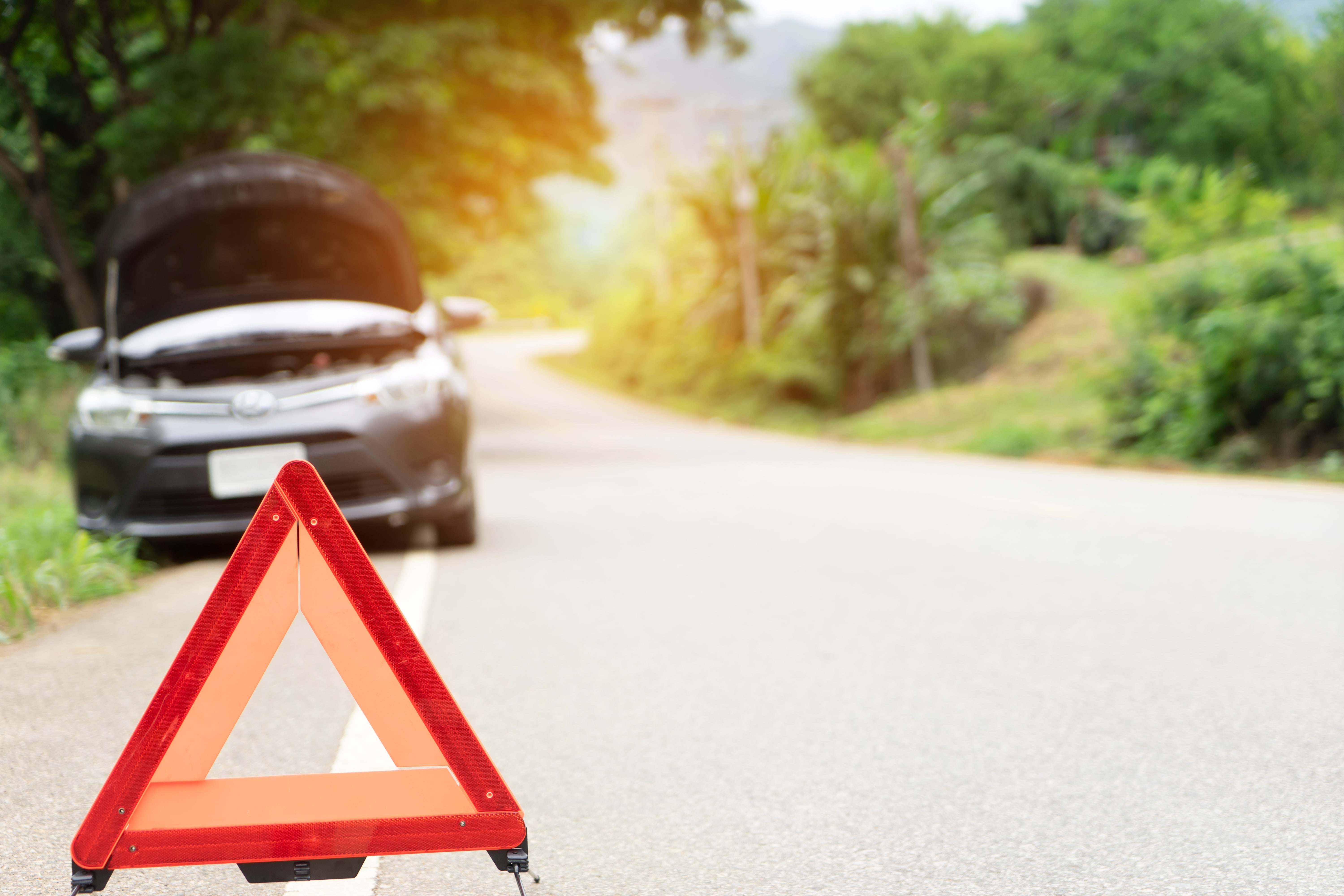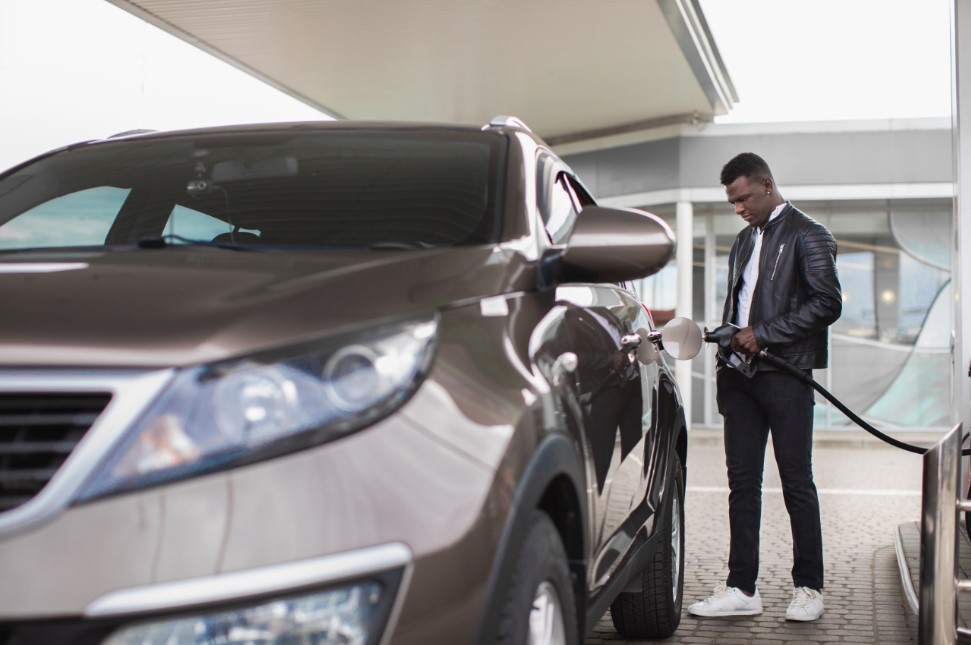The 3 Most Common Reasons Cars Breakdown (And What Teen Drivers Need to Do When it Happens)

No one wants to be stuck on the side of the road, especially during a cold winter or hot summer. However, it’s easy to ignore the check engine light or forget about the brake warning light. Unfortunately, simple automotive problems that trigger a warning light at first can later escalate to a full breakdown—which can be a nightmare if you need to get to work or make it to an appointment. Proper maintenance and regular auto service help prevent issues, but it’s not uncommon for the unexpected to happen. In this blog, we’ll dive deeper into the three most common reasons cars break down.
Reason #1: Dead Battery
One of the reasons your battery may die is from leaving your lights on or radio playing while your car isn’t running. Your engine charges the battery, so if it isn’t running, the lights or radio will quickly drain the power. Other reasons for a dead battery include extreme temperature changes, which impairs charging time and battery life, or maybe your battery is just old. Regardless of the reason, you’ll know your car’s battery is dead if the engine only cranks lightly or won’t crank at all when you turn the key and the dashboard lights flicker.
Jumpstarting a car is the best way to revive your battery (unless the battery is frozen, in which case you need to thaw it first). Find a friendly neighbor and follow these steps. (You can also find a portable battery charger from a nearby store—follow the manufacturer’s instructions if you do.)
1. Set the parking brake and ensure your car’s ignition is off. Also turn off all radios, heaters, and any other electronics.
2. Pop the hood and find your battery, which is located near the front left headlight.
3. Remove any covers to your battery; you will see two posts, one positive (+) and one negative (-). Follow Steps 1-3 with your friendly neighbor’s vehicle.
4. Connect the jumper cables like this:
Positive (+) jumper cable to positive (+) of the dead vehicle.
Opposite end of the positive (+) jumper cable to the positive (+) of the boosting vehicle.
Negative (-) jumper cable to the negative (-) of the boosting vehicle.
Attach the last negative (-) cable to an unpainted metal surface on your car that isn’t near the battery.
5. Once the batteries are hooked up, start the boosting vehicle’s engine.
6. Let the engine run for a couple of minutes.
7. Start the engine in the dead vehicle.
8. Remove the jumper cables in the reverse order they were connected. So, remove the negative (-) jumper cable from the metal surface of the dead vehicle first.
Then you’re back on the road! If you believe your battery died because you haven’t replaced it in a while, you may want to drive straight to an auto repair store and get a new one. They typically only last a couple of years, and old, worn-out batteries will not hold a charge. You don’t want to have to jumpstart your car every time you go to drive it.
Reason #2: Flat Tire
Rough roads are often tough on tires. Plus you may drive over things that are hazardous to them, like nails or glass. Even a worn tire can eventually lead to a flat. In these events, you’ll either need to call roadside assistance or—if you have a spare tire in your trunk—change the tire yourself. Changing a tire is easier than it sounds, and we havea guide that will take you through 13 easy steps to changing a flat.
While they can be easily changed, flat tires are preventable. First, rotate your tires every 7,000 miles to ensure they wear evenly. This helps extend the tire’s lifespan and improve traction.
Second, keep your tire pressure leveled. On the driver side door, you’ll see a label giving you the recommended tire pressure (usually around 30 PSI). Tire pressure should be checked monthly to ensure your tires are working at maximum efficiency; an underinflated tire can lead to a damaged rim, lack of driving control, or even a blowout.
Third, align your wheels every 15,000 miles. Like tire rotation, aligning your wheels provides a more even wear on your tires. It also ensures that the steering direction is more accurate, and that the car drives smoothly.
With these three tips, you lower the risk of a flat tire considerably.
Reason #3: Overheated Engine
When an engine overheats, it can be due to a host of reasons, the most common of which is a leak. Thermostat housing, hoses, and pumps are just a few examples of cooling components that can leak, which inevitably leads to engine overheating. There may also be a problem with the radiator or water pump. You’ll know you have an overheating problem if the temperature gauge is in the red or steam escapes from under the hood.
The first thing you should do if your engine begins to overheat is safely pull-over. One simple trick to cool down an engine is to turn on your heater at full blast. This pulls heat away from the engine, though it also pushes that heat to you—so maybe roll down the window. Popping the hood is a good way to let heat leave the engine, but don’t try to open the hood unless you can do so from inside your car. The hood can cause severe burns before it cools. And, this last tip is important, do not attempt to drive your car, even if you do get it to cool down.
Once you’re able to open the hood, check the coolant tank: a clear plastic container with a black cap. Because it’s clear, you’ll be able to see how much liquid is inside. Coolant tanks require a mix of 50/50 coolant to water, but you can add just water in a pinch. However, make sure you remember to add the proper coolant mix as soon as possible. It’s important to note: don’t ever open the radiator cap when it’s hot and pressurized. The best and safest way to handle this situation is to call a tow.
Worst Case Scenario
At Christian Brothers Automotive, we know breakdowns can happen at the most inconvenient times. Because your vehicle is vital to your life, we prioritize safe and effective auto care. From tire rotation to coolant flushes, battery replacement and more, our experienced team is here for you first, and your car a close second.
Visit or call your local Christian Brothers Automotive for your next service.


[1].jpg)
Sunwash-Tech-with-Customer.jpg)

